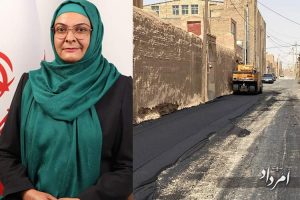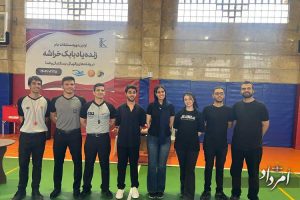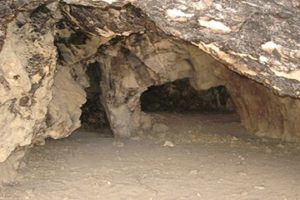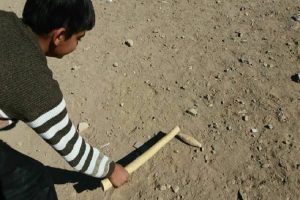Before Muzaffareddin shah Qajar brought an automobile (car) from Europe and its French driver drove the king in the dirt roads of the capital, tehranis had not seen a car. The only vehicles seen on the roads were the carriages of the elites or the rickety carriages used by the commoners. When their shocked eyes met with the four wheels of the Shah’s iron vehicle and their mouths were left speechless by this shocking scene, they named the phenomenon “steam carriage”. No one thought that one day, not so far away, they would take so much interest to learn to sit behind the wheel and drive, and driving would become a routine task, like all other tasks.
Several years passed, and Tehranis witnessed the events of the constitutional revolution and many political changes, until 1300 (solar calendar) arrived. Now, the people could see quite a few cars in the unpaved streets of Tehran. The sight of a steam carriage no longer surprised Tehranis, and this foreign car had lost its novelty for them. At the beginning of the 14th century, the number of vehicles in the capital had reached 600, and the number of people who wanted to learn to drive increased daily.
Tehran’s first driving school
The pioneers in giving driving lessons to the residents of the capital were four Tehranis, and a Russian officer who was more familiar with the work of cars than others and was known as the head of the school. He was called Alexander Dekhatesky, and no one know how he came to Tehran and stayed there.
Four men accompanied the Russian officer: Ali Parastok (Parastoo) who seems to have worked in the police department; another is known as Mohammad /taghi Khan, a mechanic. The third one was Mansour Khan Mostofi, known as an expert in the police department, but we don’t know what was his expertise: the car or crime detection? The fourth was named Ali Akbar Rahimipour, who accepted the responsibility of training the driving volunteers. This group of five started their work in 1308, but their school did not last long and was closed.
After the events of Shahrivar 1320 and the consequences of World War II, Ali Parastok decided to set up another school. This institution provided driving lessons to the people, as well as teaching car mechanics and engine repair. Long before that, in 1309, a set of rules in 32 clauses was written and approved for the capital’s vehicles. The cars had to have identifiers such as the owner’s address, rear and front license plates, and tax plates, and they had to follow the traffic rules. However, those laws were half-paragraphs and had not yet taken a stable and correct form and method. This work required time and more familiarity with traffic laws.
Another task of the police department was to implement another rule to be added to the previous traffic rules that had been approved by the country’s judiciary. In 1318 the police department printed and distributed a 7-page booklet containing those rules. Now everything was ready for Ali Parsastok to set up his driving school and take the first step.
Let us add here that Abbas Hosseini, in his book “History of the cars of Iran”, unlike others, wrote that the founder of the Parastoo driving school was not Ali Parsastok but his brother Mohammad Hassan Parsastok.
He was the publisher of a newspaper called Parasto, and following the events of Shahrivar 1320, he closed his newspaper, and soon after that, he opened the Parasto driving school in the same place. Others have written the date of Parastoo School’s start in 1318, and Hosseini has considered that date to be 1325. However, what is more famously said is that Ali Parastok was the founder of Tehran’s first driving school; Of course, after the group worked with the Russian officer.
Tehran’s second driving school, Parastoo Institute, started functioning on Shahpur Street (currently Vahdad Eslami) near Molavi intersection. Ali Parastok was its founder. He was well known as an expert and a disciplined teacher in his profession of driving education. Parastok was praised for being disciplined and consistent in his work. He was diligent in teaching students how to drive a car and repair cars, to the many well-known characters of that time, and helped them get their driver’s licenses. At that time the driving license was called “tasdigh”. Parastok, like his brother, seems to have worked in the Police Department of Tehran, as his main job. Since this institute was previously a newspaper office, he could use the printing tools there and print instructional booklets on driving laws and car repair. People welcomed these booklets, which made Parastok print them many more times. Especially, his booklet “Parastoo driving school regulations”, published in 1332, was very helpful for the new trainees.
At the same time, other booklets were printed in Tehran, such as the book “Car Driving and Maintenance Guide,” published by Tehran Technical College in the 1930s.
Parasto School continued its work with a change in its management. This institute still teaches driving to new trainees, in the same old building. Some of the former tools of the institute are kept there, especially several licenses of those who had got their training in the early years of the Institute’s establishment.
The first driving license and rules in Tehran
At the beginning of the 1930s, the total number of signs approved for driving on the streets of Tehran was only 20. Therefore, learning them and giving exam was found to be easy. The first license issued in Tehran dates back to 1301, however, some believe this date to be 1299. We do not know for whom this license was issued. It was only valid for 4 years and had to be renewed. In those years the place where the driving tests took place was in the Shemiran Police station.
Abbas Hosseini writes in his book that in 1300 AD, the central police office of Tehran was located on Bab Homayun Street. It was called the “Uniform Police Department.” One of the sections of this department was called “Movable objects”! A wierd name. It meant cars and any vehicle that could move from one place to another! However, the head of this department was an officer named Fathollah Behnam. He had 10 constables, who stood at the intersections and streets in Tehran, with their white arm bands, controlling the cars passing by, and overseeing the implementation of traffic rules, in the capital. 10 constables for all of Tehran! This sounds like a joke now-a-days, though Tehran of those days was very small. Tehran’s area did not stay the same, and the number of its cars was much more than the 600 cars counted in 1300. Especially in the years 1310 onwards, the number of vehicles in the capital increased daily, and there was a need for more driving schools. Therefore, after Parasto School, numerous driving training institutes started working in Tehran.
Despite all this, driving education in Tehran did not follow systematic and unified rules, until 1348 (1969). Training rules were optional; in addition to driving schools, training was also given by relatives and friends of the new trainees. It is obvious that most of the training was not going by any education standards and was done according to the trainer’s style. Then, in 1348, consistent and uniform rules were set and implemented, and accordingly driving education was done in an organized manner, in the capital and other cities of the country.










